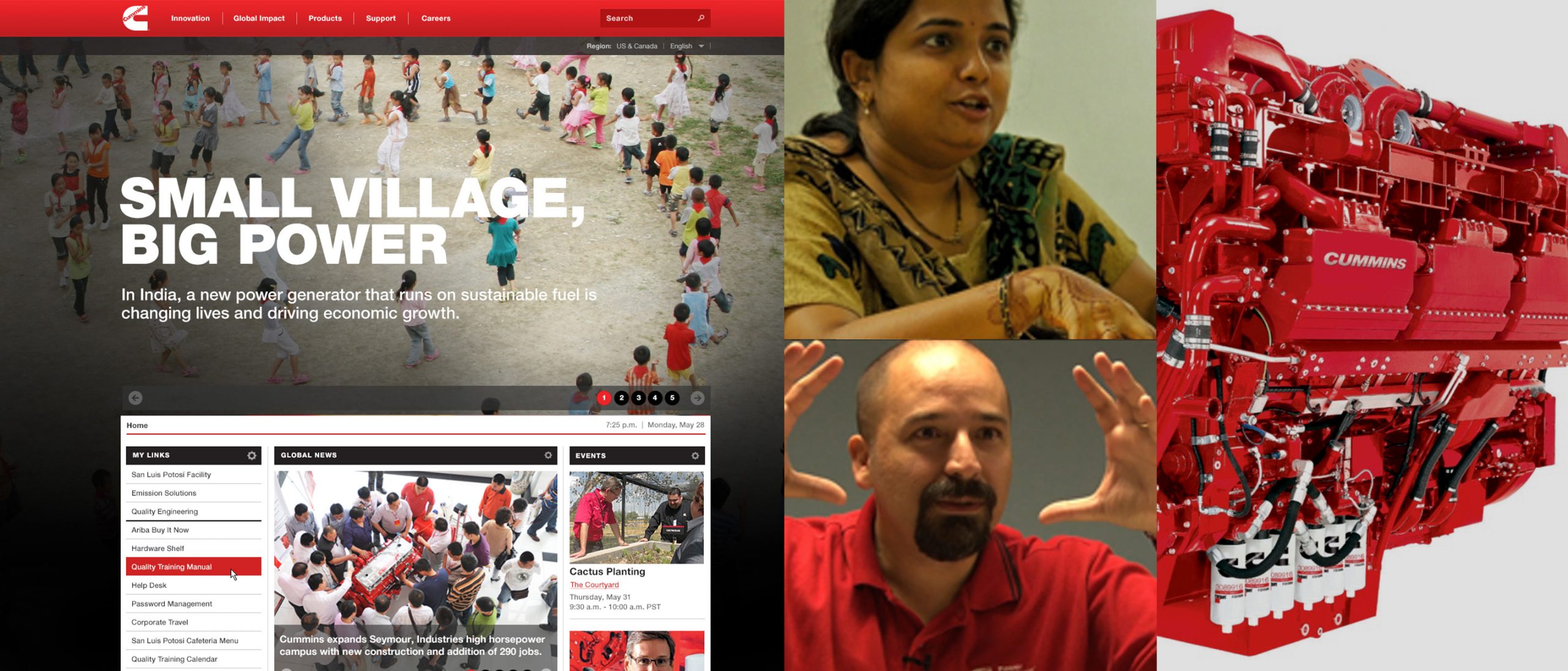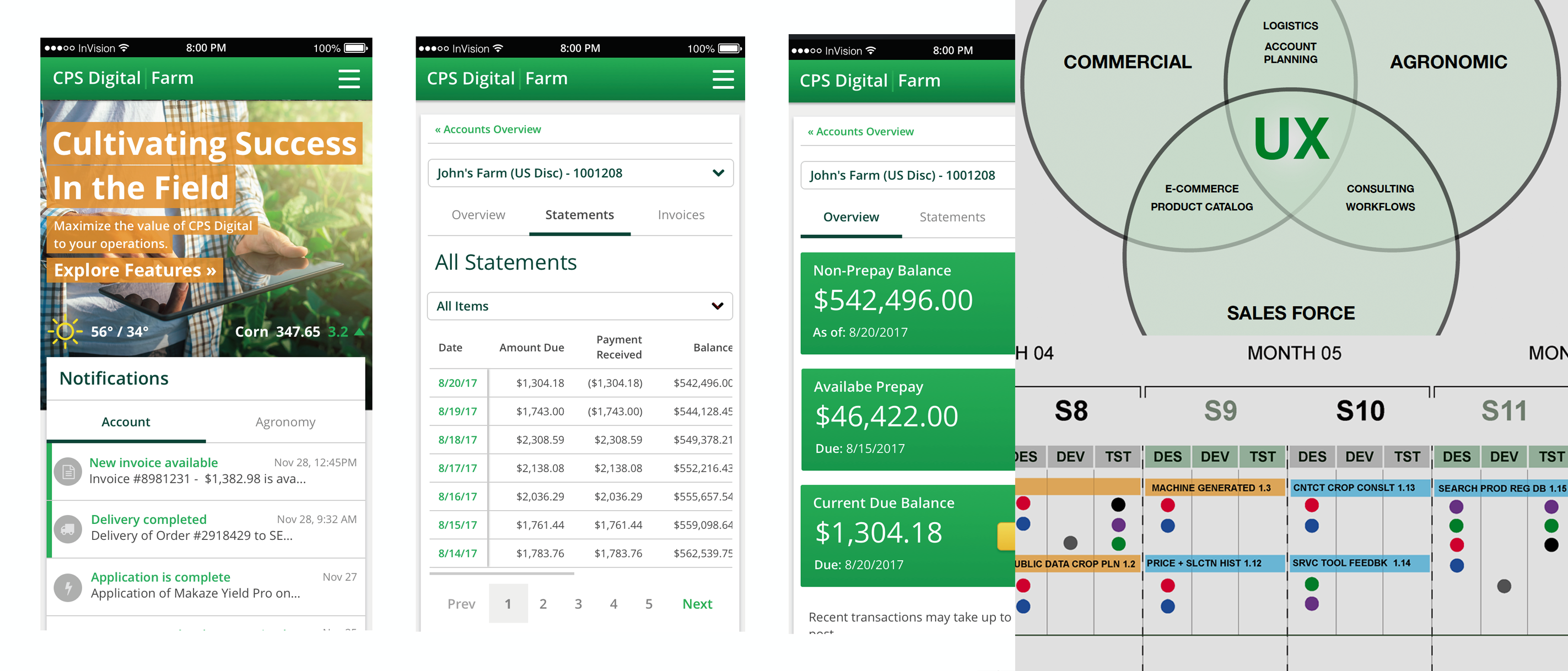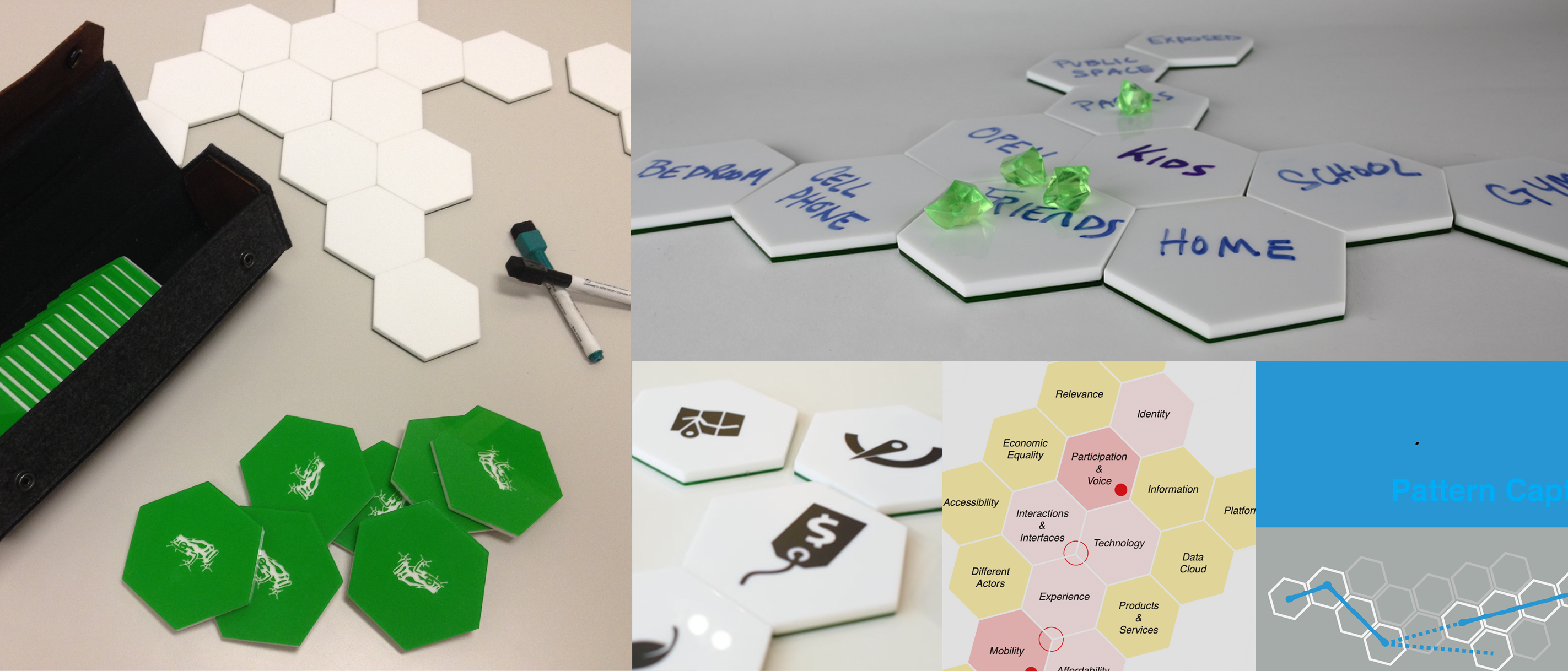Strategic, cross-functional design leadership requires active, tactical engagement. Managing design workflows and outcomes needs the
balance of both craft and communication. Here
are a few examples.


Global Intranet, Cummins
Creating Global Reach in a 100+ year Organization
Cummins Engines, a multinational company over 100 years old, faced challenges with its internal and external regional communications. Founded in Indiana, they were now more present in India and other parts of the world.
- The existing digital platforms were US-centric, limiting local stories and resulting in the development of internal ad hoc tools and sites to address unmet business needs.
- Through initial stakeholder research, our team identified a strong yet largely untapped Marketing capability.
- As the Executive Creative Director, I recommended that our key C-Suite stakeholders sponsor a global publishing platform that would celebrate local content and drive local authorship.
The task was to align stakeholders across regions and functional areas to provide regular, transparent communication, build trust, and create compelling communication platforms for end-users.
- This involved organizing cultural, business, and operational information based on how customers and employees thought about it, not how business units were structured.
- Stakeholder alignment would empower local business unit content providers to create locally-focused yet globally relevant content.
To achieve this alignment, our 14-person, cross-functional team conducted
a global research program spanning six geographies, four months, and 57
on-site interviews with executive leadership and internal communications employees.
- The research program focused on identifying the essence of local authorship and empowering local content providers to create content relevant to their regions.
- Qualitative research and discovery were complemented by embedded film crews that captured interview content and field context.
- A 20-minute video documentary was developed. Insights from this research program and the documentary format directly influenced the development of a new information framework and an intranet MVP.
The 8 month project resulted in an improved communications design framework, a new brand strategy narrative, internal and external website redesigns, and a 20-minute modular video documentary that supported the introduction of these new platforms.
- The focus on local authorship empowered teams to design for local audience needs and connect employees based on various behaviors
and attributes. - The project emphasized a user-centered design approach, promoting consistency and emotional connectivity throughout the Cummins communications ecosystem.
- The new intranet helped drive empathy, respect for ideas, business processes, and collaboration, resulting in long-term value across the organization.


Agronomy Tools, Nutrien
Building Design Capability Across Multiple Lines of Business
Nutrien, an industrial agriculture concern, aimed to create a leading digital platform in agriculture, with a focus on providing Nutrien Retail crop consultants the tools they needed to effectively manage commercial and regional farm operations.
- The platform aimed to enhance the year-round experience for growers by delivering crucial data types in clear formats, aiding in crop planning, and offering action-oriented outcomes across the entire growing cycle.
- A key blocker to this goal was the relationship between internal agronomic and accounting business processes; crop planning and material ledger services had been manually supported for decades, creating an impediment to scale.
- Additionally, entrenched IT practices offered unreasonable time estimates to achieve a unified platform.
The primary task was to develop a digital strategy and platform to address and support Nutrien's current business practices.
- This required significant executive advocacy and education, as well as the orchestration of design capabilities and MVP team coordination.
- The challenges included implementing clean-slate approaches under persistent IT department resistance, talent sourcing constraints, reorganization efforts, and collaboration with multiple on-site technology vendors.
- Acting as proxy VP Design, my role was to facilitate MVP and business unit teams toward outcome consensus, communicating level-of-effort, talent, and material needs from C-suite to production.
The path to a unified digital toolset for agronomy and accounting functions involved the orchestration of a design capabilities plan, C-suite design advocacy, research execution, concept sprints, and agile backlog priming.
- Our core 5-person team introduced agile methodologies and software development for the MVP and the standing IT group was removed in favor of these approaches.
- We scaled the vendor design teams to 8+ persons, including disciplines in experience and interaction design, research, data science, visual design, and information architecture.
- Together, these teams worked on national field research and maintained user panels in addition to the MVP application.
- Throughout the 7-month program and towards its conclusion, I wrote the JDs for the internal digital capability, developed a talent pipeline, and hired a full-time design and development team.
The result was the establishment of a long-term digital strategy, significant time-savings in development compared to traditional IT approaches (6 months vs 2 years), and the identification and pipelining of unified BU functionalities.
- A design capability and presence were successfully established, and a functional MVP for Accounts and Agronomy was shipped to a select national customer base.
- The platform aimed to provide a seamless, unified suite of capabilities for all participants, fostering a technologically integrated perspective on the growing cycle's key relationships and processes alongside the economic needs of farm customers.


Experience Tiles, frog design
Creating Tools for Collaboration & Insight
Over several years, while conducting facilitated design collaboration with clients across different industries, it became apparent that specific collaboration gaps existed.
- These gaps were evident in teams with diverse goals or limited ability to express design ideas effectively, resulting in downtime during sessions as participants struggled to arrive at a common vocabulary.
- There was a need to improve participant understanding of group outcomes in a collaborative design setting.
The task was to develop a system of collaboration that addressed the gaps in understanding and communication during facilitated co-design sessions.
- This system would enable a common vocabulary for design, business, and engineering disciplines to describe organizational, product, or
service challenges. - Additionally, there needed to be avenues for additional user-facing inputs as well as non-technological disciplines.
- The system needed to be reusable and express collaborative engagement through its material presence and modes of interaction
Our team introduced a physical system called "Experience Tiles," designed as hexagonally shaped white, write-erasable acrylic pieces.
- These tiles were versatile and adaptable for various communication, planning, and decision-making scenarios.
- Participants could write, draw, or assign symbolic values to the tiles, bridging diverse business, cultural, and sector-specific vocabularies.
- The team experimented with materials to create a tangible way for individuals to express their sense of order in design negotiations.
- The tiles were used to facilitate discussions through an accompanying structure of worksheets.
- They acted as a medium for communication, enabling participants to visualize the shape of a conversation and create mission statements based on the discovered conversational flow.
The introduction of Experience Tiles had several outcomes, including the delivery of 32 kits and training documentation to eight internal studios.
- Methods and case studies related to the tiles were published in the frogThink workbook, accessible to all clients.
- Custom tile-kit materials were produced for key industry partners, including organizationally specific decals and instruction sets.
- The tiles became a central facilitation method for design discussions and were widely integrated across all frog studios and internal client sites as part of the global design education offering.
- The tiles helped spatialize concepts, enabling diverse disciplines to communicate effectively and fostering a sense of co-ownership and shared narrative of design solutions.
scott nazarian . ground state
selected & collaborative works
